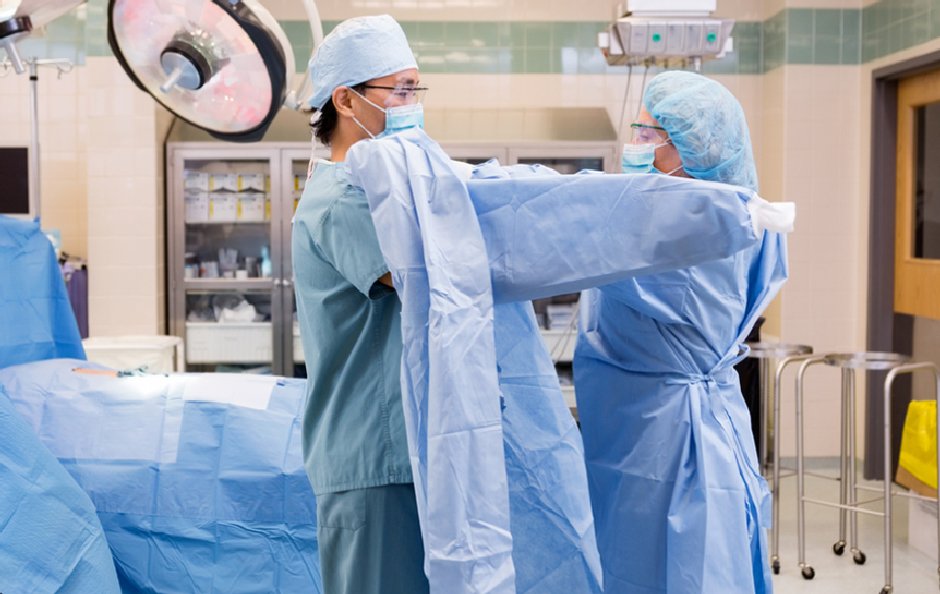Gowns for surgical purposes are integral to the protective attire worn by healthcare professionals during medical procedures. These gowns are a crucial barrier against pathogens, bodily fluids, and other contaminants, safeguarding both the wearer and the patient. Understanding their construction, functionality, and significance is vital in comprehending their role in infection control and ensuring optimal patient care. This column will provide important facts about such products.
Barrier Protection
The primary function of surgical gowns is to provide a protective barrier between the healthcare provider and the patient’s surgical site. Constructed from specialized materials, these gowns act as a shield against potential sources of contamination, such as blood, saliva, and microorganisms. By effectively blocking the transmission of infectious agents, these gowns play a pivotal role in reducing the risk of surgical site infections (SSIs) and cross-contamination in healthcare settings.
Comfort and Mobility
In addition to offering superior barrier protection, they are designed to prioritize the comfort and mobility of healthcare professionals during surgical procedures. Engineered with ergonomic considerations, these gowns allow unrestricted movement and flexibility, enabling practitioners to perform their tasks efficiently and precisely. Enhanced comfort promotes prolonged wearability, minimizing the need for frequent adjustments or replacements during lengthy surgical interventions.
Breathability
These gowns incorporate strategic design elements to facilitate optimal airflow and ventilation, which is crucial for mitigating heat buildup and moisture retention during extended procedures. By promoting efficient air exchange without compromising barrier integrity, these gowns enhance wearer comfort and minimize the risk of discomfort or overheating. This thoughtful approach to design underscores the commitment to both the physical well-being of healthcare providers and the maintenance of a sterile surgical environment. Through the harmonious balance of barrier protection and breathability, they uphold standards of safety and comfort essential for successful surgical outcomes.
Infection Control
Effective infection control is paramount in surgical settings, with high pathogen transmission risk. These gowns are crucial barriers, preventing infectious agents from transferring between patients and healthcare workers. These gowns enhance patient safety and protect medical personnel’s occupational health by minimizing contamination spread. Their role in infection prevention is integral to maintaining a safe surgical environment, ensuring optimal patient outcomes, and upholding healthcare standards. Consequently, they are fundamental in mitigating infection risks and promoting a safer, more secure healthcare environment for all stakeholders involved.
Safety
In the clinical setting, they are engineered to meet stringent safety standards and regulatory requirements, ensuring optimal protection against biological hazards and potential risks. By adhering to established guidelines for material selection, construction, and performance, these gowns play a pivotal role in mitigating the risk of exposure to harmful pathogens and contaminants. Through their commitment to excellence and adherence to industry best practices, they foster a safer healthcare environment for all stakeholders, promoting the well-being of patients and healthcare providers.
Professional Appearance
The visual presentation of healthcare providers, accentuated by the choice and fit of these gowns, establishes a standard of excellence. A cohesive and polished appearance fosters a sense of trust and reassurance among patients, reinforcing the notion of expert care. The professional demeanour projected by well-appointed gowns resonates beyond the operating room, shaping the institution’s reputation and commitment to excellence. As such, the meticulous selection and presentation of surgical attire serve as a testament to the dedication and proficiency of healthcare professionals, elevating the overall standard of patient care.
Types of gown
These gowns are available in two main types: disposable and reusable. Disposable gowns, crafted from specialized non-woven materials, provide a reliable shield against contaminants while ensuring optimal airflow for wearer comfort. Their lightweight construction facilitates unrestricted movement during procedures, enhancing surgical efficiency. Moreover, these gowns offer a cost-effective solution by eliminating the need for laundering and sterilization, streamlining workflow and reducing operational overhead. These gowns uphold stringent infection control standards by minimizing patient cross-contamination risk and safeguarding the integrity of healthcare environments. Their disposable nature further simplifies disposal procedures, promoting environmental sustainability and regulatory compliance.
Reusable surgical gowns are engineered to withstand the demands of repeated use, making them cost-effective and environmentally sustainable alternatives to disposable options. Their durable construction, often incorporating reinforced seams and specialized finishes, ensures longevity and reliability through multiple laundering and sterilization cycles. Using high-quality materials like cotton or polyester blends, these gowns balance durability and wearer comfort, facilitating prolonged wear without compromising protective efficacy. Additionally, their eco-friendly design reduces waste generation and promotes responsible resource utilization, aligning with broader sustainability initiatives within the healthcare sector.
Surgical gowns are indispensable tools in modern healthcare, serving as vital components of infection control protocols and ensuring the safety and well-being of both patients and healthcare providers. Combining advanced materials, ergonomic design, and stringent quality standards makes these gowns crucial in optimizing patient outcomes and promoting a safer, more efficient surgical environment.






